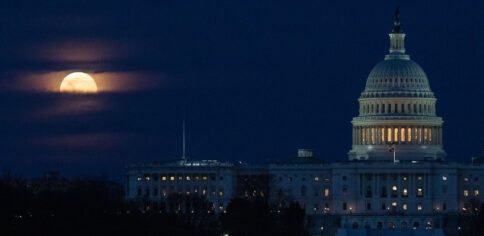
If the light of the moon was keeping you up last night it’s because the first full moon of spring is March 28 but looks full March 27 and March 29.
And because this spring (Northern Hemisphere) full moon is closer to earth than the ones in January and February it appears brighter and is considered by some sky watchers as a “Supermoon.”
Actually, its perigee (closest part of its orbit) is March 30 so it still will continue to appear very bright and mostly full.
Don’t worry if your area is cloudy. The full moons in April, May and June will be even closer and will look like Supermoons.
Called the Worm Moon, Crow Moon or Sap Moon by some native American tribes, this full moon also sets Easter, which, in 2021, is April 4. See Tonight | EarthSky
Fun Fact: Do you know what syzygy means? It’s when three bodies, such as the Sun, Earth, and the Moon, are in alignment. See Time and Date for the term and alignment.
Time and Date also does an excellent job of explaining how long the moon really is fully illuminated and why due to the earth’s tilt it may not appear at total illumination, noting that the degree of illumination somewhat blends what appears to be a Full Moon and the last stage of a Waxing Gibbous Moon or the beginning of a Waning Gibbous Moon.
On NASA’s site a sidebar tells that the term “supermoon” was “coined by the astrologer Richard Nolle in 1979 and refers to either a new or full Moon that occurs when the Moon is within 90% of perigee, its closest approach to Earth.’
The site also connects the first spring moon’s names from native Americans and different religions. It notes that this weekend’s Full moon is also called the Pesach moon on the Jewish calendar, Paschal moon for Western Christianity and Medin in SRI Lanka.
For more word definitions and moon phases visit Space.
